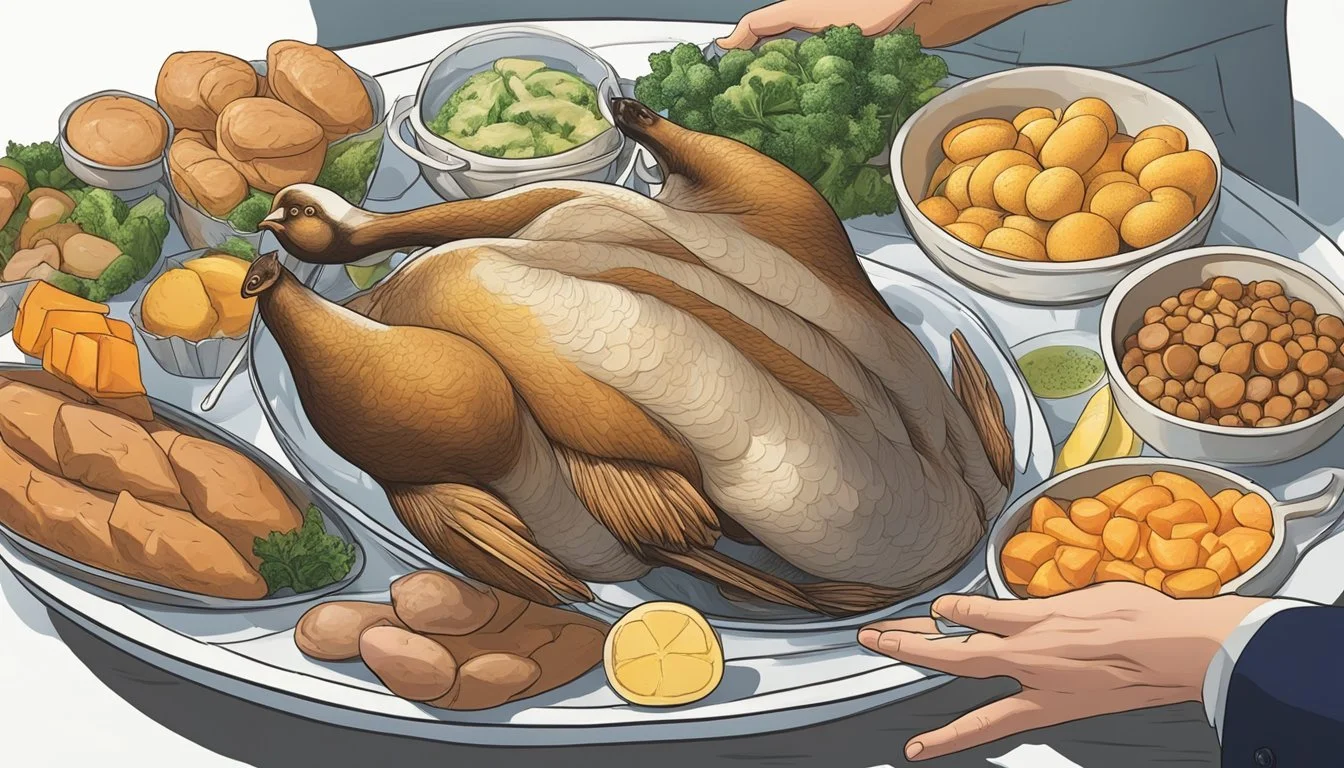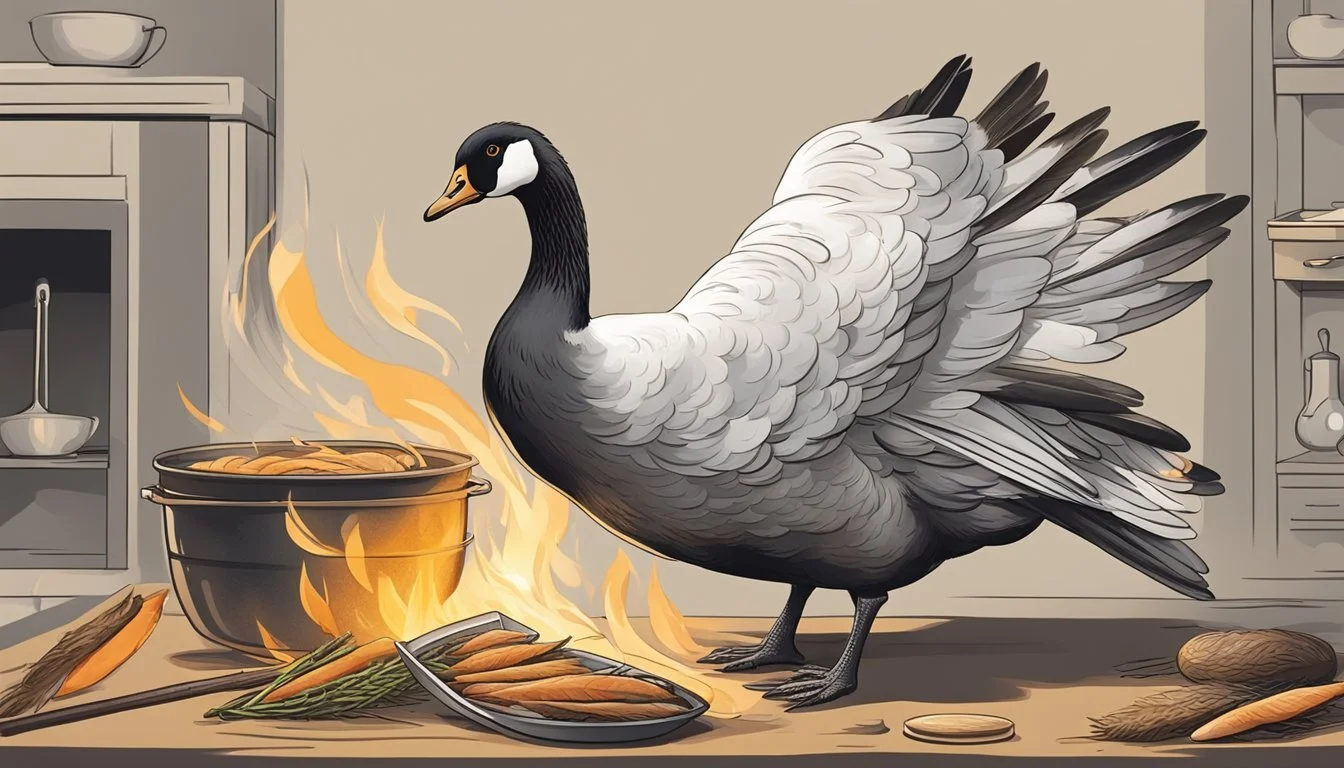Fresh vs. Frozen Goose: Choosing the Best Option for Your Festive Feast
Goose has long been considered a gourmet delicacy, prized for its rich, flavorful dark meat. Whether fresh or frozen, this luxurious poultry offers a delicious alternative to traditional holiday fare. Fresh goose provides the best flavor and texture, but frozen goose is more widely available and can be just as tasty when properly prepared.
Whole geese typically weigh between 8-12 pounds, making them suitable for serving 6-8 people. The meat has a deeper, more complex taste than chicken or turkey, with a tender, succulent texture when cooked correctly. Goose fat rendered during cooking is highly prized by chefs for its flavor-enhancing properties in other dishes.
When selecting a goose, consumers have the choice between fresh and frozen options. Fresh geese are available seasonally, usually around the winter holidays, while frozen geese can be purchased year-round. Both varieties offer excellent quality, though some connoisseurs prefer the taste and texture of fresh goose.
Understanding Goose as Food
Goose meat offers a unique culinary experience, distinct from more common poultry options. It provides a rich flavor profile and notable nutritional benefits.
Nutritional Profile of Goose
Goose meat is known for its dark, flavorful characteristics. It contains high levels of protein, essential amino acids, and beneficial minerals. A 100-gram serving of roasted goose provides approximately:
305 calories
22 grams of protein
22 grams of fat
0 grams of carbohydrates
Goose is rich in iron, zinc, and B vitamins, particularly niacin and vitamin B6. It also contains omega-3 fatty acids, which support heart and brain health.
The fat content in goose is primarily monounsaturated and polyunsaturated fats, considered healthier than saturated fats found in some other meats.
Goose Vs. Other Poultry
Compared to chicken and turkey, goose meat is darker and more flavorful. It has a higher fat content, which contributes to its rich taste and moist texture when cooked properly.
Goose meat is leaner than duck but fattier than chicken or turkey. The fat is concentrated in the skin, allowing for easy removal if desired.
Nutritionally, goose offers more iron and zinc than chicken or turkey. It contains similar protein levels to other poultry but provides more calories due to its higher fat content.
Goose meat has a stronger, gamier flavor than chicken or turkey, making it a popular choice for special occasions and holiday meals. Its taste is often described as a cross between duck and beef.
Selecting a Goose
Choosing the right goose is crucial for a delicious meal. Several factors influence the quality and taste of goose meat, including its size, origin, and how it was raised.
Whole Goose Considerations
When selecting a whole goose, size matters. Young geese typically weigh between 8 to 12 pounds and offer tender meat. Larger geese may have tougher meat but provide more servings.
Look for a goose with smooth, unblemished skin and no signs of discoloration. The skin should be intact with no tears or punctures.
Check the packaging for information on the goose's origin and how it was raised. Many prefer geese from the USA, raised without antibiotics.
Factors Affecting Quality and Taste
Free-range geese often have superior flavor due to their diverse diet and ability to move freely. These birds tend to have leaner meat with a richer taste.
All-natural, Grade A geese are top choices for quality. They're free from artificial ingredients and meet high USDA standards for appearance and quality.
The goose's diet plays a significant role in its flavor. Geese fed a varied diet, including grains and grasses, typically have more flavorful meat.
Fresh Vs. Frozen Goose
Fresh geese are available seasonally, usually from late fall through winter. They offer the best texture and flavor but require immediate cooking or proper refrigeration.
Frozen geese are more widely available year-round. When properly frozen, they maintain their quality for up to a year.
To thaw a frozen goose, place it in the refrigerator for 2-3 days before cooking. Never thaw at room temperature, as this can promote bacterial growth.
Frozen geese are often more affordable and convenient, while fresh geese may have a slight edge in texture and flavor.
Safe Thawing and Preparation
Proper thawing and preparation are crucial steps for safely cooking goose. These techniques ensure food safety while preserving the meat's quality and flavor.
Thawing Techniques
Thaw frozen goose in the refrigerator for the safest results. Place the bird on a tray to catch any drips and allow 24 hours of thawing time for every 4-5 pounds. For faster thawing, use the cold water method. Submerge the sealed goose in cold water, changing it every 30 minutes. This method takes about 30 minutes per pound.
Never thaw goose at room temperature, as this promotes bacterial growth. If pressed for time, use the microwave's defrost function, but cook the goose immediately after thawing.
Preparation Tips Before Cooking
Once thawed, remove giblets from the cavity and rinse the goose inside and out with cold water. Pat dry with paper towels. For crispier skin, prick it all over with a fork, being careful not to pierce the meat.
Trim excess fat from the neck and body cavity. This step reduces grease and helps achieve a crispier result. Season the goose inside and out with salt and preferred herbs.
For even cooking, bring the goose to room temperature for 30 minutes before roasting. This ensures the breast and legs cook uniformly.
Cooking Techniques
Properly cooking a goose requires specific techniques to achieve tender, flavorful results. The methods chosen impact the texture and taste of the final dish.
Roasting a Whole Goose
Roasting is the traditional method for cooking a whole goose. Preheat the oven to 425°F (218°C). Place the goose on a rack in a roasting pan, breast side up. Prick the skin all over with a fork to help render the fat.
Roast for 30 minutes, then reduce heat to 350°F (175°C). Continue cooking for about 20-25 minutes per pound. Use a baster to remove excess fat from the pan every 30 minutes.
The goose is done when a thermometer inserted into the thickest part of the thigh reads 165°F (74°C). Let rest for 15-20 minutes before carving. This method results in crispy skin and juicy meat.
Alternative Cooking Methods
While roasting is most common, other techniques can yield delicious results. Braising involves partially submerging the goose in liquid and cooking slowly in a covered pot. This creates tender meat that falls off the bone.
Smoking imparts a rich flavor to goose meat. Use a smoker or charcoal grill with wood chips. Maintain a temperature of 225-250°F (107-121°C) and cook until the internal temperature reaches 165°F (74°C).
Grilling goose pieces over medium-high heat can produce crispy skin and smoky flavor. Cook breasts to medium-rare and legs until tender. Baste frequently with rendered fat to keep the meat moist.
Storing and Preserving
Proper storage techniques are crucial for maintaining the quality and safety of fresh or frozen goose. Freezing is ideal for long-term storage, while refrigeration works well for shorter periods. Careful handling of leftovers extends the shelf life of cooked goose.
Freezer Storage Tips
Wrap fresh goose tightly in plastic wrap or aluminum foil before placing it in a freezer bag. Remove as much air as possible to prevent freezer burn. Label the package with the date of freezing. Whole geese can be frozen for up to 6 months, while cut pieces last 4 months.
For best results, thaw frozen goose in the refrigerator. Allow 24 hours of thawing time for every 4-5 pounds. Never thaw goose at room temperature, as this promotes bacterial growth.
When freezing cooked goose, cool it completely first. Divide into portion-sized amounts for easier thawing later. Use within 3-4 months for optimal flavor and texture.
Extending Shelf Life After Cooking
Refrigerate cooked goose within 2 hours of preparation. Store in shallow, airtight containers to cool quickly and evenly. Cooked goose keeps in the refrigerator for 3-4 days.
To further extend shelf life, freeze leftover cooked goose. Wrap tightly in freezer paper or place in freezer bags. Use within 2-3 months for best quality.
When reheating, ensure the internal temperature reaches 165°F (74°C) to kill any bacteria. Only reheat the amount you plan to eat, as repeated reheating degrades quality and increases food safety risks.
Serving and Presentation
Properly serving and presenting roast goose elevates the dining experience. Careful carving techniques and thoughtful presentation ideas can transform this classic dish into a showstopper for special occasions.
Carving and Serving Techniques
Start carving by removing the legs at the joint where they meet the body. Slice the breast meat parallel to the breastbone, working from the top down. Separate the thighs from the drumsticks. The dark meat tends to be more flavorful and moist than the breast meat.
Serve goose meat warm, arranging slices on a platter. Pair with traditional accompaniments like roasted root vegetables, braised red cabbage, or apple sauce. Consider serving the rendered goose fat separately - it's prized for cooking and adds richness to other dishes.
Presentation Ideas for Special Occasions
For holidays and special events, create a stunning centerpiece by placing the whole roasted goose on a bed of seasonal herbs or fruit. Garnish with roasted apples, pears, or citrus slices for a pop of color.
Consider a dramatic table presentation by carving the goose tableside. This interactive approach adds flair to formal dinners. Serve on warmed plates to keep the meat at its best.
For a modern twist, present individual portions on small slate tiles or wooden boards. Accent with edible flowers or microgreens for an elegant touch. Use colorful, seasonal vegetables as side dishes to create a visually appealing plate.
Economic and Ethical Considerations
The choice between fresh and frozen goose involves weighing costs, quality, and ethical farming practices. These factors impact both consumers and producers in the poultry industry.
Cost Comparison with Other Poultry
Fresh goose tends to be more expensive than other poultry options like chicken or turkey. A 10-12 lb fresh goose can cost significantly more than a similarly sized turkey.
Frozen goose is generally cheaper than fresh, but still pricier than most other poultry. The higher price reflects the costs of raising geese, which require more space and time to mature compared to chickens.
Smoked goose commands a premium price due to additional processing. This specialty product appeals to gourmet markets and restaurants.
For budget-conscious consumers, alternatives like duck or turkey offer similar rich flavors at lower price points. However, goose remains popular for special occasions and holidays.
Ethical Farming Practices
Ethical goose farming prioritizes animal welfare and environmental sustainability. Responsible farmers provide geese with access to open spaces, clean water, and natural foraging opportunities.
Raising geese without antibiotics is becoming more common. This practice addresses concerns about antibiotic resistance and appeals to health-conscious consumers.
Ethical farms often implement humane slaughter methods to minimize stress. These practices can increase production costs but improve meat quality and align with consumer values.
Some farms integrate geese into regenerative agriculture systems. Geese help control weeds and fertilize fields, reducing the need for chemical inputs.
Consumers can support ethical farming by choosing products from certified humane or organic producers. These certifications ensure adherence to specific welfare standards.









